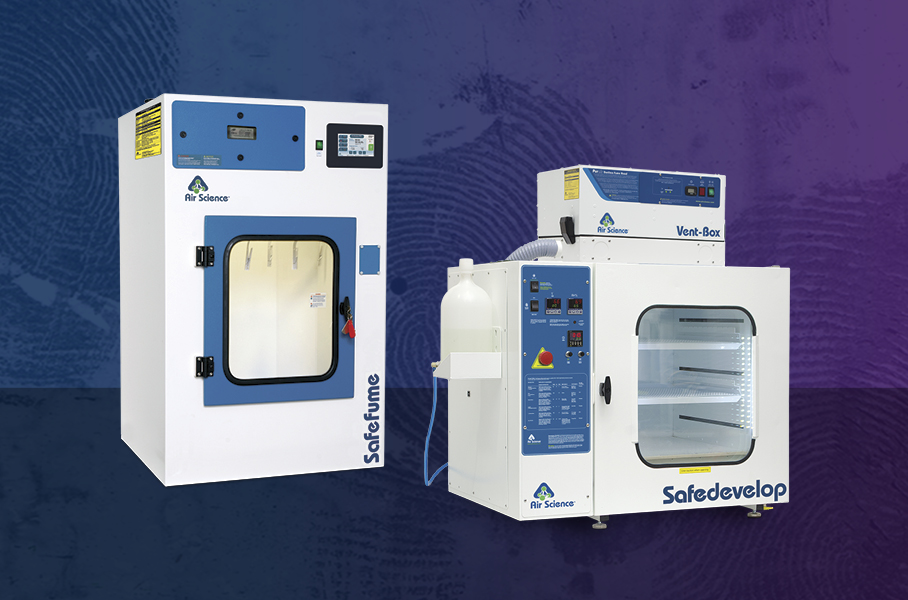
It’s no secret that fingerprints are as unique as the individuals they belong to. This uniqueness and the fact that fingerprints do not change naturally over time are key reasons they are such an important tool for identification, especially in criminal investigations.
Fingerprint Identification Methods
When examining fingerprints, three identification levels are used for fingerprint matching. Level 1 identification includes the pattern configuration and ridge flow of the fingerprint. While this level can be used for exclusion, it does not provide enough information for positive identification. Level 2 fingerprints provide enough extra detail, including bifurcation, ridge ending, and other formations, to allow identification. Level 3 features add pores and ridge shape.i
| Level 1 | Level 2 | Level 3 |
|
|
|
Most conventional fingerprint matching relies on Level 1 and Level 2 features. In fact, while Level 3 adds a variety of different details, there is no clear consensus on the reproducibility and classification of these details.ii As a result, Level 2 features are considered the gold standard for positive fingerprint matching. Ensuring Level 2 features are captured can depend on the types of fingerprints found on evidence or at a crime scene.
Types of Fingerprints
Three types of fingerprints can be found in an investigation.
| Visible | Invisible |
Plastic
Patent
|
Latent
|
While visible fingerprints are relatively easy to find as they can be detected with the naked eye, latent fingerprints must be processed using either fingerprinting powders or chemical methods.
Benefits of Chemical Development of Latent Fingerprints
- Chemical development provides uniform exposure to all points of exposed surfaces
- Highly accurate results are more likely to include Level 2 details essential for positive identification
- Results are fast, non-invasive, and safe
- Fumechambers are available in a variety of sizes to accommodate a wide variety of evidence
Air Science® offers a wide selection of fumechambers for the chemical development of latent fingerprints. Air Science fumechambers use cyanoacrylate (CNA), DFO, Ninhydrin, or other chemicals in a fuming cycle, during which the chemicals react with trace acids, oils, and proteins in latent fingerprints and humidity in the chamber to produce a visible, white deposit that forms along the ridges of the fingerprint.
Cyanoacrylate Fumechambers
Designed to safely and reliably develop latent fingerprints on nonporous surfaces.
Safefume 360 Automatic Cyanoacrylate Fuming Chambers
Safefume Automatic Cyanoacrylate Fuming Chambers
DFO and Ninhydrin Development Chamber
Designed to safely and reliably develop latent fingerprints on porous surfaces.
Safedevelop DFO and Ninhydrin Fingerprint Development Chamber
Contact us today to request a quote.
iJohn R. Vanderkolk, “Chapter 9: Examination Process,” Fingerprint Sourcebook, U.S. Department of Justice Office of Justice Programs (National Institute of Justice), 7.
iiAlexandre Anthonioz; Nicole Egli; Christophe Champod; Cedric Neumann; Roberto Puch-Solis; Andie Bromage-Griffiths, “Level 3 Details and Their Role in Fingerprint Identification: A Survey among Practitioners,” Journal of Forensic Identification Volume: 58 Issue: 5 (September/October 2008): 562-589, https://www.ojp.gov/ncjrs/virtual-library/abstracts/level-3-details-and-their-role-fingerprint-identification-survey.